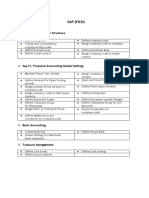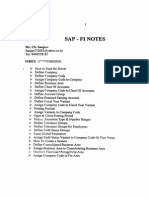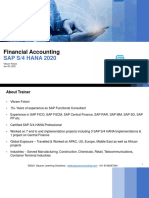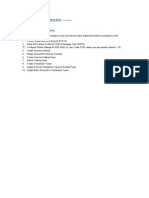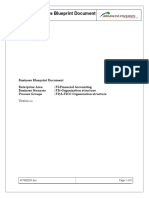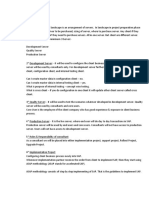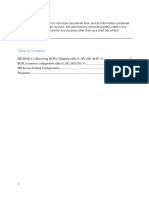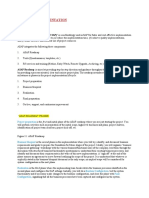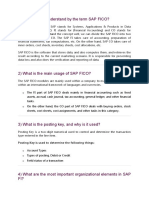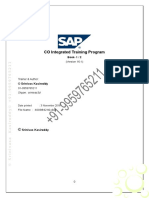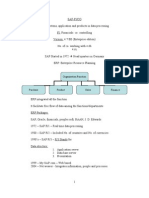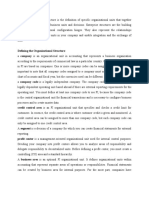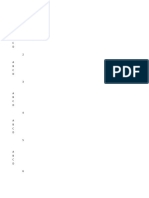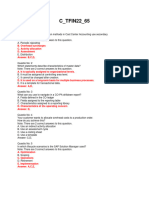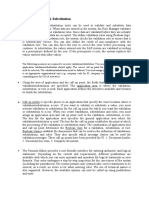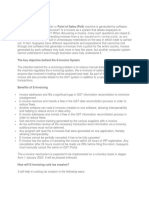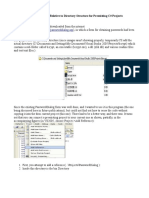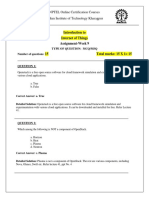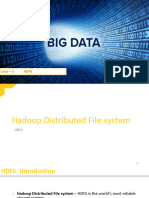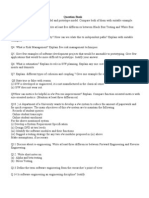SAP FICO Configuration Guide
SAP (Systems, Applications and Products) developed by SAP AG, a German Software Company founded
by 5 ex-IBM Employees in 1972.
Real Time Three-Tier Architecture.
SAP supports a real-time three-tier (R/3) architecture made up of these three layers:
• Presentation Layer: This is the first layer in a typical three-tier architecture and it serves as the input
device that controls the SAP system. It is user-friendly Graphical User Interface (GUI) that’s used by the
end-user to input data into the system. It also serves as a data-output device. The presentation layer
communicates with the application layer.
• Application Layer: This layer serves as the middleman in a SAP system. It’s where the all processing is
done. The application layer can be referred to as the central processing unit (CPU). It collects data from
the database, processes it, and passes it to the presentation layer.
• Database: Allows the data to be stored, called up, and modified.
SAP FICO
FICO stands for Financial (FI) and Controlling (CO). These are the two core modules in SAP and are tightly
integrated to help management maintain and generate financial reports for efficient decision-making
and strategic planning.
Financial (FI)
The FI module is a business process designed specifically for organizations to maintain their financial
records efficiently on a daily basis, for management to be able to ascertain their financial position, and
for those who need to generate financial statutory reports for external purposes to meet the needs of
various stakeholders in real-time.
The FI module consists of other sub modules, including: General Ledger (G/L), Accounts Receivable (AR),
Accounts Payable (AP), Bank Accounting, Asset Accounting, Special Purpose Ledger, Travel Management,
and so on. FI is integrated into other modules like Sales and Distribution (SD) and Material Management
(MM). Postings made in these modules with financial implications are posted real-time to FI.
Controlling (CO)
The Controlling module is designed specifically to provide operational information to management to
aid better decision-making, and for formulating strategic and operational planning. In SAP ERP, the
Controlling module is composed of the following sub modules: Cost Element, Cost Center, Internal
Order, Activity-Based Costing, Product Costing, Profitability Analysis, and Profit Center.
�Organizational Structure
Organizational structure is a formal line of command structured systematically to highlight the order of
authority, relationships, position, communication, duties, responsibilities, and reporting procedure in an
organization. The primary objective of an organization is to utilize its resources effectively to maximize
return to the shareholders. To do this, an organization needs a formal organizational chart (organogram)
spelling out how tasks and activities are allocated, coordinated, and supervised. In addition, it shows
how
information flows between various management levels.
SAP tends to mimic the conventional organizational structure in the representation and distribution of
tasks in the system based on functions and departments. In SAP, the structure is made up of
organizational
units just like the conventional organizational structure in a business.
The organizational units in FI in SAP ERP are specifically geared toward meeting business functions and
generating reports (financial statements) for external purposes while meeting legal regulations. Creating
an organizational unit is a minimum requirement in SAP FI.
Organizational structure in FI is company code-specific. As part of organizational structure customization
in a SAP system, it is therefore mandatory to define appropriate organizational units in the system for
the system to be able to perform your business processes effectively.
The Client
The client is an independent unit in the SAP ERP with its own master records and sets of tables. Data
entered at this level is valid for all company codes (defined in the next section) and organizational units
in the client. In other words, all the company codes in the client will have access to data created at this
level. For that reason, the client is said to be the highest level in a SAP system hierarchy. The benefit of
the client is that data is entered only once, thus eliminating duplication, reducing redundancies, and
saving resources like storage space. As all company codes in the client can have access to the same data
created at this level, the need to create individual data for each company code is eliminated.
Each client has its own unique log-on key, which must be entered by the user in order to access the
client and perform business processes.
In a client, you can define one or more company codes. Likewise, one or more business areas can be
assigned to one or multiple company codes.
Company Code
A company code is a separate independent and legal entity that allows you to model and remodel your
business organization based on financial reporting requirements (such as the profit and loss statements
and balance sheets). Every company code in SAP ERP is represented with a unique four-character code.
The code allows you to identify a company in a client. This is the case in an environment where you have
more than one company code in a client.
In practice, global corporations have operations in several countries across the globe and it is often
mandatory for global corporates by law to meet legal reporting and disclosure requirements in each
�country of their operation. Every country has its own accounting regulations with which companies
operating within their border must comply. SAP ERP is beneficial in this aspect, because it allows
organizational units in the same corporate organization functioning in various countries to function
independently for reporting purposes. This enables you to meet specific tax and other legal reporting
requirements by allowing you to use a separate unique company code for a company in each country.
In the SAP ERP when customizing company code, you define the following items:
• Company name
• Country
• Language key
• Currency
In addition, a company code must be assigned at least one operational or primary chart of accounts
needed for business processes in the company code. Occasionally, a group chart of accounts may be
needed for controlling purposes and a country-specific chart of accounts may be needed to meet
country specific reporting requirements. A group chart of accounts is optional.

